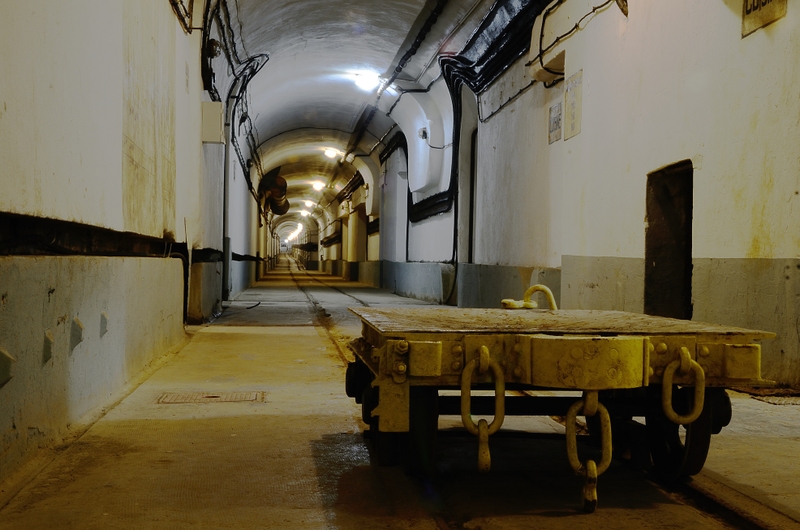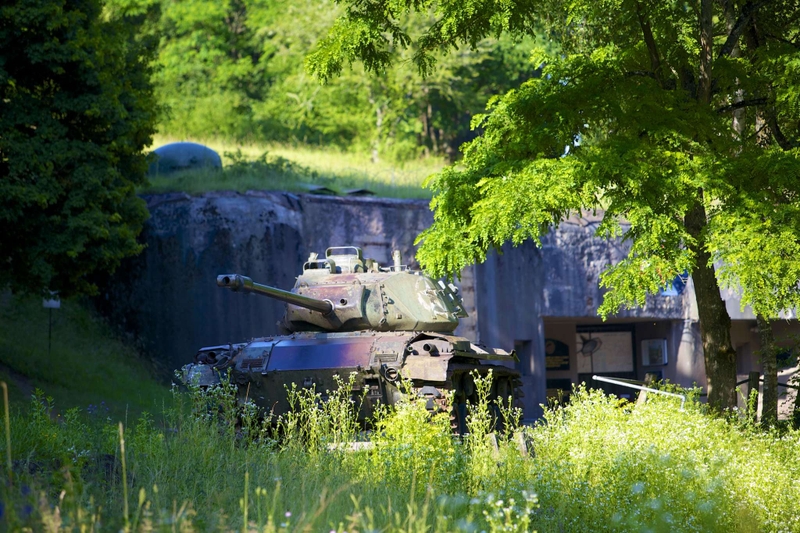The Four à Chaux fortress - Maginot line
The lime kiln was built between 1930 and 1935 by about 800 workers, mainly foreigners. The structural work was carried out by the Entreprise Générale d'Orléans, while the mechanisms such as the firing turrets and the ventilation system were carried out by specialist companies. The fort takes its name from a lime kiln which was in operation near the fortress until 1939, and which gave its name to the area surrounding the fortress. It also became its civilian name, its wartime code name having been A4. It is one of the 108 forts of the Maginot Line, spread over 750 km of borders. It belongs to the Fortified Sector of the Vosges.




Soldiers belonging to the Fortress Infantry Regiments (FIR) were mobilised several times before the Second World War, when Hitler annexed Austria, the Sudetenland and Bohemia. At the end of August 1939, these soldiers were mobilised for the last time to protect the country from the German invasion. During the "Drôle de Guerre", the soldiers had organised life in the work, set up a grocery shop in the well room, and collected cattle and barrels of alcohol in Lembach, an empty village, its inhabitants having been evacuated to the Haute-Vienne, in Droux. The spirit that reigned in the fort at the time testifies to the morale of the troops, which according to some accounts was relatively good.
They remained in the fortress until 1 July 1940, when the regiments were forced to surrender by the French High Command, having fought mainly in May and June 1940. Indeed, a few days after the Armistice of 22 June 1940, the Maginot Line was given to the German army, which had succeeded in invading France, particularly in the north of the country.
It is a work of medium importance, covering an area of 26 hectares, with 6 combat blocks, including 3 artillery blocks, and 4.5 km of underground galleries. The number of men was nearly 600.
67510
LEMBACH
03 88 94 43 16
lignemaginot.lembach@orange.fr
www.lignemaginot.fr
Visit of The Four à Chaux fortress a fortified structure on the Maginot line
Climb to new heights on a visit to this ouvrage overlooking the village. A gripping, immersive experience revisiting history! The guided tour takes you back in time and immerses you 25m underground to discover the period installations still in place. Have a great visit and don't forget to wear good walking shoes and warm cloathing (13°).
Guarding the Sauer valley, the Four à Chaux fortress is located on a hill overlooking the village of Lembach. The 3 km of galleries go down to 30 m below ground. 24 officers and 600 men lived there. They belonged to a fortress infantry regiment. They were mobilised several times before returning to their post at the end of August 1939. As there was no action between September 1939 and May 1940, they organised themselves, seizing cattle that were roaming the streets of Lembach, whose population had been evacuated... The visitor will get acquainted with their living conditions by visiting the dormitories, the sanitary facilities, the kitchens or the infirmary. The structure was targeted by Stukas from June 1940. Although it had no effective anti-aircraft defence, it held out for another five days after the armistice, which took effect on 26 June. After special negotiations in Wiesbaden, the troops were forced to surrender but emerged with the honours of war on 2 July. The Germans then occupied the fort, stripping it of everything they could use on the Atlantic Wall. Overpressure gas tests caused considerable damage. The layout is similar to that of other forts, except that the men's entrance is 24m higher than the ammunition entrance, so the fort has an inclined plane to bring equipment and ammunition from the ammunition entrance to the upper gallery. Enjoy your visit, walking shoes and warm clothing (13°).
Complément
Pensez aux chaussures de marches et vêtement chaud (13°) !
Horaires d'ouverture
- du 02/01 au 31/03, uniquement les samedis et dimanches : 14h30
- du 01/04 au 30/04, tous les jours: (fr) 14h00 + 16h00 ; (de) 13h30 + 15h30
- du 01/05 au 30/09, tous les jours: (fr) 10h00 + 14h00 + 16h00 ; (de) 10h30 + 13h30 + 15h30
- du 01/10 au 31/10, tous les jours: (fr) 14h00 + 16h00 ; (de) 13h30 + 15h30
- du 01/11 au 23/12, uniquement les samedis et dimanches: 14h30
- du 27/12au 30/12, tous les jours: 14h30
Public price
Adult : €9.00Kid : €5.00
Price with the pass
Adult : FreeKid : Free
Access conditions
-
line 317 -
GPS: lat.48.993304 - long.7.793876
